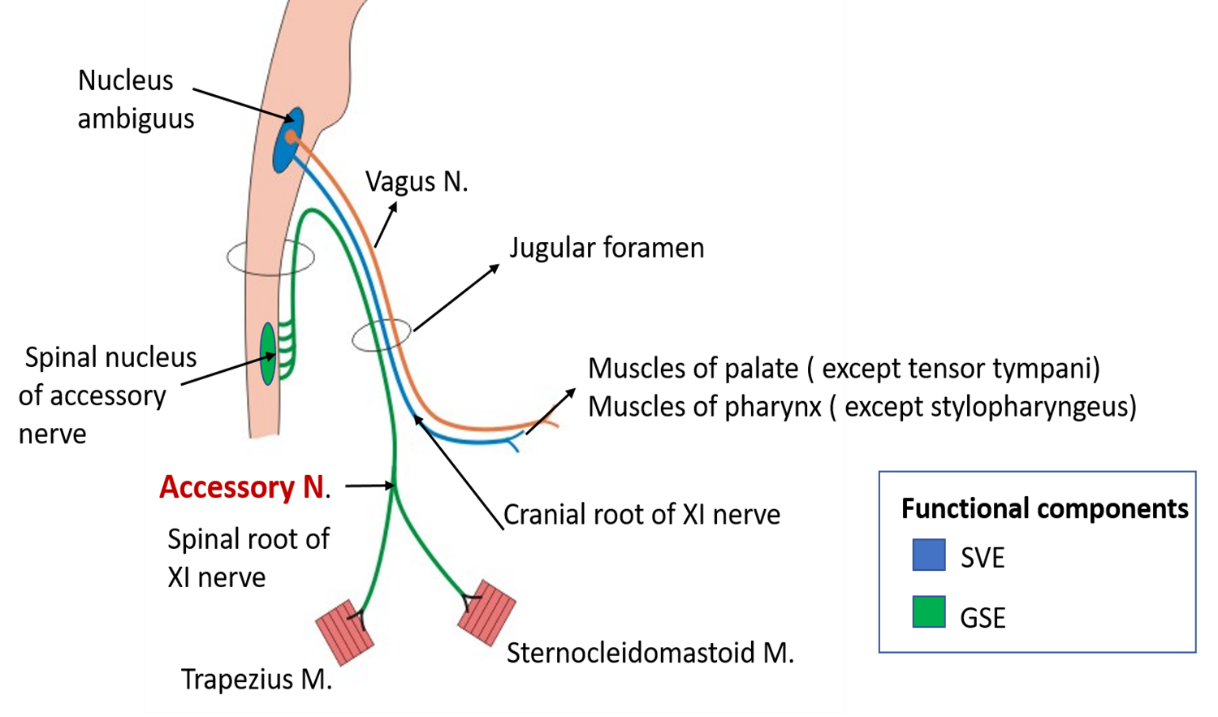Advertisements
Introduction
Accessory nerve is the 11th cranial nerve. It has two parts: Spinal and cranial.
Origin:
- Spinal part aries from the spinal nucleus of accessory nerve located in upper 4-5 cervical segments of spinal cord.
- Cranial part has its origin in the nucleus ambiguus located in medulla oblongata.
Name the nuclei, functional components and structures supplied by accessory nerve .
Following are the nuclei, functional components of accessory nerve:
| Functional component | Nucleus | Structures innervated |
|---|---|---|
| SVE(Special visceral efferent) | Nucleus ambiguus | Muscles derived from 4th & 6th branchial arches i.e. muscles of palate , pharynx along with vagus nerve. |
| GSE(General somatic efferent) | Spinal nucleus of accessory nerve in upper 4-5 cervical segments of spinal cord | Sternocleidomastoid and tapezius muscles |
Describe the course of accessory nerve.
- Spinal part emerges from the upper 4-5 cervical segments of spinal cord . It enters cranium through foramen magnum. Cranial part emerges from the ventral surface of medulla oblongata.
- Spinal and cranial part leave the cranial cavity through jugular foramen.
- Cranial part joins vagus nerve.
- Spinal part enters the posterior triangle of neck by passing deep to the sternocleidomastoid muscle and innervates two muscles – sternocleidomastoid and trapezius.

Applied Aspects
Lesion of cranial part of accessory nerve
Results in:
- Nasal regurgitation of liquids
- Nasal twang to the voice
*Due to paralysis of soft palate muscle.
Lesion of spinal part of accessory nerve
Results in:
- Drooping of shoulder –due to paralysis of trapezius muscle.
- Inability to tilt the head to towards the shoulder on the same side and turn the chin to the opposite side – due to paralysis of sternocleidomastoid
